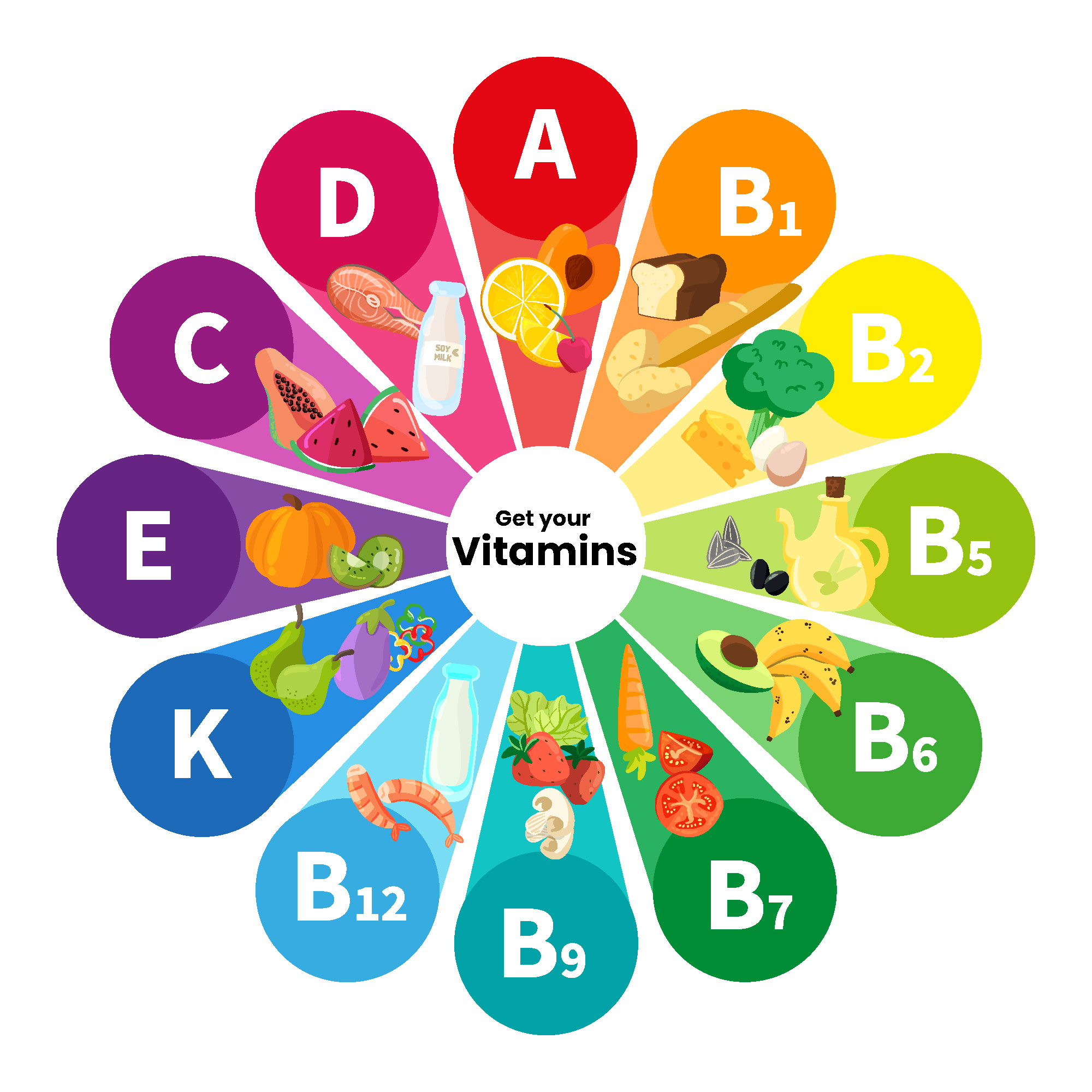Women, with all their strength and femininity, need to have their health taken care of in the best possible way, which is why in today’s article we’re going to look at women’s health and how we can help, with nutrition as our greatest ally.
Through food we can generate illnesses, prevent them or even treat them, so we must maintain a healthy diet at all stages of our life, understand with the help of a professional what our body needs most and what we should give up a little to generate a better quality of life.
Among women’s health, I’m going to discuss 3 of the most common issues that are part of women’s lives and how nutrition can help improve these signs and symptoms:
PMS (premenstrual tension)
PCOS (polycystic ovary syndrome)
Menopause
PMS (premenstrual tension)
usually starts 10 days before the next menstrual cycle, generating a mix of emotions, its symptoms and their intensity vary from woman to woman, it’s not a rule. Although there is no specific treatment for PMS, we can alleviate its physical and emotional symptoms by eating well and exercising. Let’s find out more about the physical and emotional symptoms and how we can avoid them:
Physical symptoms: Breast pain, swelling, headaches, acne, cramps, etc.
Emotional symptoms: Nervousness, irritation, more frequent crying, anxiety, rapid mood swings, among others.
Content
ToggleHealthy eating helps with PMS:
Making some dietary changes during this period is fundamental, due to the hormonal changes that take place during the menstrual period, some vitamins and minerals are essential for us to be able to stabilize these symptoms.
Essential vitamins and minerals for relieving symptoms:
Calcium: relieves the pain of menstrual cramps and reduces irritability.
Where to find it? Dark green leafy vegetables, milk and dairy products.
Magnesium: improves mood and reduces irritability.
Where to find it? Wholegrain cereals, dark green leaves, chickpeas and sprouted sprouts.
Omega 3: reduces swelling and reduces irritability.
Where to find it? Fish oil, salmon, tuna, linseed and oilseeds.
Vitamin C: improves sleep and anxiety.
Where to find it? Kiwi, cashew, acerola, orange, lemon.
Vitamin B6: improves headaches and irritability.
Where to find it? Wholegrain cereals, nuts, peanuts, bananas, liver, leafy greens.
Vitamin B12: A lack of this vitamin can cause weakness and discouragement.
Where to find it? Red meat, chicken and seafood.
What to avoid to relieve symptoms:
Refined foods high in sugar: White rice, flour, cake, cookies, sweets in general.
Caffeine and alcohol: Coffee and alcoholic drinks.
Salt: High-sodium, ultra-processed foods.
PCOS (polycystic ovary syndrome)
One of the most common clinical conditions of endocrine dysfunction affecting women. PCOS is seen as a metabolic disease, with all its implications, focusing not only on the reproductive system, but also on the body as a whole.
How is the diagnosis made?
Oligoamenorrhea (absence of menstruation for 90 days or more or less than 9 menstrual cycles a year.
Hyperandrogenism (alterations in the programming of the regulation of the hypothalamic-pituitary-ovarian axis, which can be characterized clinically or by laboratory tests.
Ultrasound morphology of ovarian polycystosis.
The main aim of the treatment is not only to address reproductive factors, but also to change lifestyles by adjusting diet and practicing physical activity, because as well as regulating body weight it is possible to control other risk factors that may be associated, such as obesity, infertility, diabetes, sleep apnea, among others.
Healthy eating helps with PCOS:
Diets rich in carbohydrates with a low glycemic index and fiber are essential, as are foods with antioxidant effects.
Essential vitamins for symptom relief:
Omega 3: improves insulin action and the inflammatory profile.
Vitamin D: its deficiency can be linked to diabetes, obesity, dyslipidemia, among others, and there is evidence of a relationship between vitamin D and PCOS symptoms.
What to avoid to relieve symptoms:
Diets rich in saturated fats and sugar can exacerbate the metabolic and hormonal profile, as well as oxidative stress in PCOS.
Menopause
A biological phase in a woman’s life, it usually occurs between the ages of 40 and 65, and is linked to the climacteric, which should be the marker of this phase corresponding to the last menstrual cycle, with the diagnosis established after 12 months have passed of amenorrhea.
Symptoms: Hot flashes, night sweats, osteoporosis, metabolic disorders, obesity, sexual dysfunction, mood swings, tiredness, among others.
These symptoms occur because at this stage the reproductive system changes, the production of hormones by the ovaries decreases and oestrogen falls.
Healthy eating helps with the menopause:
It is necessary for women to have an adequate intake of vitamins and minerals during this phase, in order to maintain good health, adequate weight and protect against comorbidities.
Essential vitamins for symptom relief:
Vitamin E: Helps moisturize and prevent vaginal and skin dryness.
Where to find it? Wheat germ, oats, beans, whole grains.
Tryptophan: Reduces the feeling of depression that recurs during this new phase.
Where to find it? Banana, milk and dairy products.
Vitamin C: Antioxidant action.
Drinking plenty of water helps to eliminate toxins and replace the fluids lost during heat waves.
Despite maintaining a good diet in these three situations: PMS, PCOS and Menopause. Sometimes it is necessary, with the assessment of a nutritionist, to use supplementation in order to complement the diet and have a more expected response to reduce symptoms.



